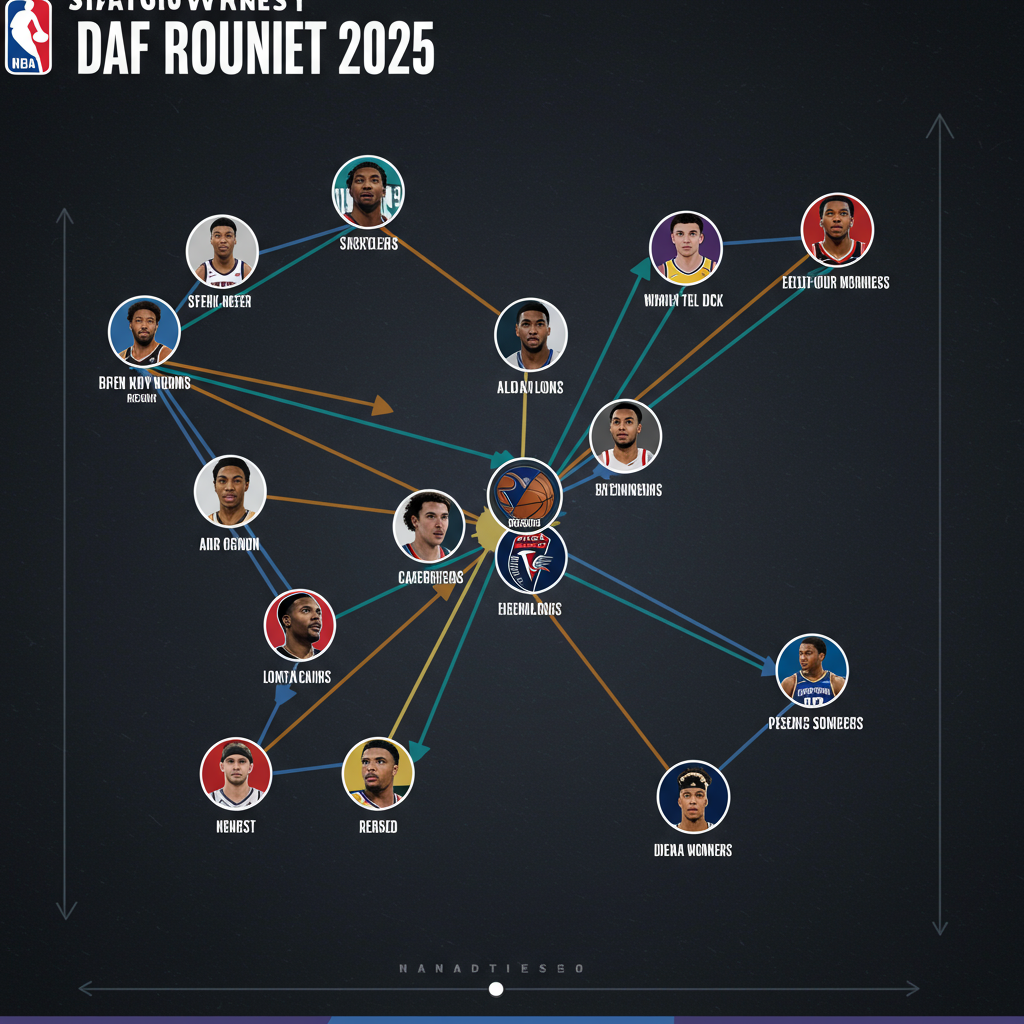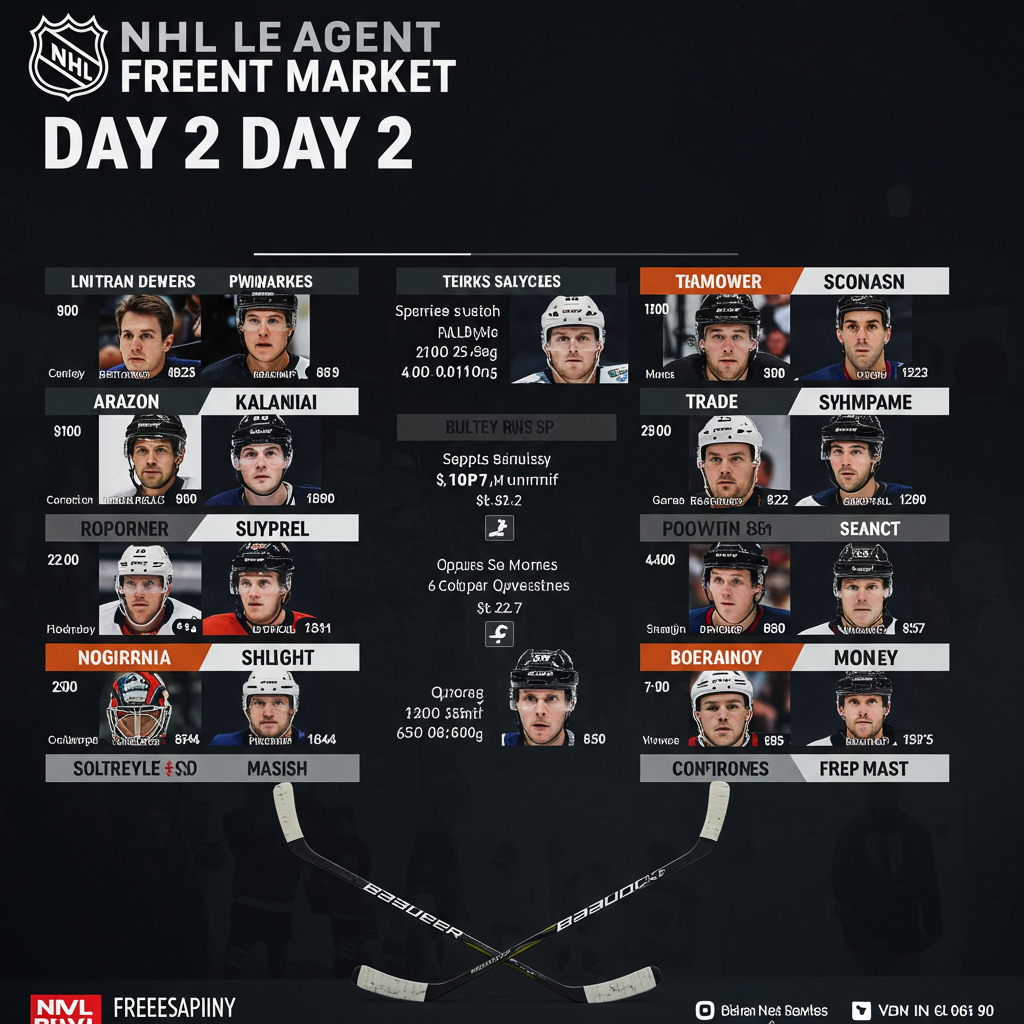The 2025 NBA Draft first round delivered plenty of fireworks, unexpected twists, and strategic moves that have instantly reshaped the outlooks for teams across the league. While the true impact of these selections won’t be known for years, we can make an initial assessment of which franchises and players appear to have landed in the best situations and who might be facing immediate questions.
Here’s a look at the perceived winners and losers from a wild first round.
First Round Winners
Several teams emerged from draft night with significant wins, either by landing top-tier talent, executing smart trades, or positioning themselves well for the future.
Dallas Mavericks: Landing the Superstar
The Dallas Mavericks hit the jackpot, securing the No. 1 overall pick despite long odds and using it to draft Cooper Flagg. Widely considered an “über-prospect,” the 6’8″ forward is lauded for his competitive fire, two-way impact, and comparisons to players like Scottie Pippen and Jayson Tatum. He’s seen as ready to contribute immediately, fitting Dallas’s goal to compete now alongside Luka Dončić. Beyond the top pick, the Mavs solidified their roster by extending Daniel Gafford and, critically, restructuring Kyrie Irving‘s contract. Irving’s lower starting salary on his new deal allowed Dallas to duck below the second luxury tax apron, creating vital financial flexibility, including access to the taxpayer midlevel exception to add another playmaker as Irving recovers from injury. These financial and personnel moves, centered around landing the draft’s top talent, position Dallas as a major winner.
San Antonio Spurs: Building Around Wemby
The San Antonio Spurs had a “fantastic job” of leveraging their draft position to build around Victor Wembanyama. Holding the No. 2 pick, they wisely didn’t overthink it, selecting Dylan Harper. Described as a high-upside shot creator and potential All-Star, Harper is seen as a perfect cultural fit with his work ethic. His ability to create rim pressure and hit catch-and-shoot threes (38.3%) makes him an intriguing backcourt partner. At No. 14, they added Carter Bryant, a legitimate 3-and-D wing (37% from 3) with ideal positional size and defensive tools. Bryant is seen as forming a potentially fearsome defensive duo with Stephon Castle. By prioritizing high-end talent and players who fit their desired defensive identity, the Spurs appear to have accelerated their rebuild.
Charlotte Hornets: Smart & Safe Moves
The Charlotte Hornets needed shooting and cultural change, and they addressed both. Drafting Kon Knueppel at No. 4 was seen as a smart, safe pick. An elite shooter (41% from 3, 91% FT), Knueppel is viewed as having “no holes” and ready to contribute immediately, fitting well alongside LaMelo Ball and Brandon Miller. They also made a “smart” trade, sending center Mark Williams (who faced injury concerns and an extension decision) to Phoenix for two future first-round picks (No. 29 in 2025, used on Liam McNeeley, and a protected 2029 first). Getting two future firsts for an injured center is seen as solid asset management. Drafting competitive shooters like Knueppel and McNeeley signals a positive shift in the team’s direction under new ownership.
Atlanta Hawks: Asset Acquirers
The Atlanta Hawks quietly had a strong draft night, highlighted by a shrewd trade with New Orleans. By moving back just 10 spots (from No. 13 to No. 23), they acquired a valuable unprotected 2026 first-round pick (the better of the Pelicans’ or Bucks’ pick). This pick has significant upside, potentially landing high in a strong 2026 class given the potential volatility of those teams. With the No. 23 pick, they still managed to draft Asa Newell, a defensive big they reportedly targeted earlier. Combined with other recent moves like acquiring Kristaps Porziņģis and Dyson Daniels, the Hawks’ front office appears to be making sensible, forward-thinking decisions that add talent and flexibility.
Other Notable Winners
Washington Wizards & Memphis Grizzlies: Both teams earned praise for specific picks. The Wizards landed Tre Johnson at No. 6, seen as a potential elite scorer with a tireless work ethic and versatile shooting. The Grizzlies traded up significantly for Cedric Coward at No. 11, a feel-good story from Division III who brings physical tools (7’2″ wingspan), shooting (39% from 3), and defensive versatility, fitting their need for a big wing.
Orlando Magic: The Magic addressed their shooting woes by drafting Jase Richardson at No. 25, who showed strong offensive flashes at Michigan State (41% 3P). He adds needed “juice” alongside Paolo Banchero and Franz Wagner, potentially providing a spark off the bench or competing for a starting guard spot.
Houston Rockets: The Rockets became winners before the draft, acquiring superstar Kevin Durant for assets including their No. 10 pick. Adding a proven scorer to a 52-win team was a bargain that directly addresses their needs. They also gained financial flexibility via Fred VanVleet’s contract restructuring.
Oklahoma City Thunder: As champions, the Thunder used their draft assets strategically, trading the No. 24 pick for a protected 2027 Spurs first to kick flexibility down the road. At No. 15, they drafted Thomas Sorber, a developmental center who could provide long-term depth behind their core.
Boston Celtics: While not a basketball win, the Celtics executed a “tidy bit of business” by trading Kristaps Porziņģis and Jrue Holiday to cut significant salary and luxury tax. This financial reset, including ducking the second apron, regained crucial roster building flexibility after a disappointing playoff exit.
Rutgers Scarlet Knights: Made history with two players, Dylan Harper (No. 2) and Ace Bailey (No. 5), selected in the top five, the highest two draft picks in program history.
Philadelphia 76ers: Lottery luck landed them the No. 3 pick, which they used on dynamic athlete V.J. Edgecombe. His versatility and defensive potential make him a crucial fit alongside ball-dominant stars.
Chicago Bulls: Landing Noa Essengue at No. 12 is seen as a potential “coup,” acquiring a player ranked much higher on some boards with projected top-five upside due to his scoring versatility and pairing him with Matas Buzelis.
First Round Losers (and Head-Scratchers)
Not every team or player had a night to remember. Some decisions raised eyebrows due to questionable strategy, fit concerns, or simply perceived poor value.
New Orleans Pelicans: Confusing Strategy
The New Orleans Pelicans’ draft night decisions were widely criticized as baffling. Trading C.J. McCollum and Kelly Olynyk for Jordan Poole and an injured Saddiq Bey was questionable. Then, they used three first-round picks on players with significant defensive concerns and overlapping skills with their current roster: Jeremiah Fears (No. 7, raw point guard), Derik Queen (No. 13, undersized center with defensive questions), and Asa Newell (No. 23, went to Hawks in trade). Most concerning was trading their unprotected 2026 first-round pick (best of theirs or Milwaukee’s) to move up just 10 spots for Queen. Giving up a potentially very valuable future asset for a questionable fit on a team already struggling with defense and injury history (Zion Williamson) left many questioning the plan, particularly with reports tying the decision-making to Troy Weaver’s past questionable moves.
Brooklyn Nets: Quantity Over Quality?
The Brooklyn Nets made history by selecting five players in the first round but were seen as losers for failing to consolidate assets to move up. Drafting three point guards (Egor Demin #8, Nolan Traore #19, Ben Saraf #26) among their five picks raised questions about roster fit and scoring ability, especially as several have shooting concerns. While the sheer volume offers multiple chances for success, the selections, many reportedly ranked lower than consensus, felt like a missed opportunity to target higher-tier talent in a more aggressive rebuild approach.
Portland Trail Blazers: Center Logjam Continues
The Portland Trail Blazers executed a smart trade down from No. 11 to No. 16, netting a future first and two seconds. However, using that No. 16 pick on Yang Hansen, a 7’1″ Chinese center widely projected as a second-round pick, was seen as a significant “reach.” This selection compounded Portland’s existing center depth with Deandre Ayton, Donovan Clingan, and Robert Williams III. Drafting another developmental big man into a crowded frontcourt creates an immediate logjam and raises questions about asset management and fit.
Ace Bailey: Best-Laid Plans Go Awry
Despite his talent, Ace Bailey can be viewed as a loser based on his pre-draft process. Reports indicated Bailey declined workouts with teams picking higher (like Philadelphia at No. 3) and signaling he preferred certain destinations (Wizards, Pelicans, Nets) in an attempt to steer his draft position. Despite these efforts, he slid to No. 5, landing with the Utah Jazz, a team he reportedly had “no idea” was interested and had not visited. While getting drafted No. 5 and guaranteed $41.2 million is a huge win in itself, his strategic maneuvering did not achieve the desired outcome regarding team destination.
Phoenix Suns: More Center Questions
The Phoenix Suns were aggressive in addressing their center need, acquiring Mark Williams and drafting Khaman Maluach (No. 10). However, they already had centers like Nick Richards on the roster, effectively spending three first-round assets on centers while facing needs elsewhere and already having a heavy luxury tax bill. This move left them without tradable first-round picks, limiting future flexibility and leading some to question if these moves truly improved the team or were just expensive shuffling at one position.
The 2025 NBA Draft first round offered a fascinating mix of expected picks, surprising slides, and potentially transformative trades. Only time will tell who truly won the night.



